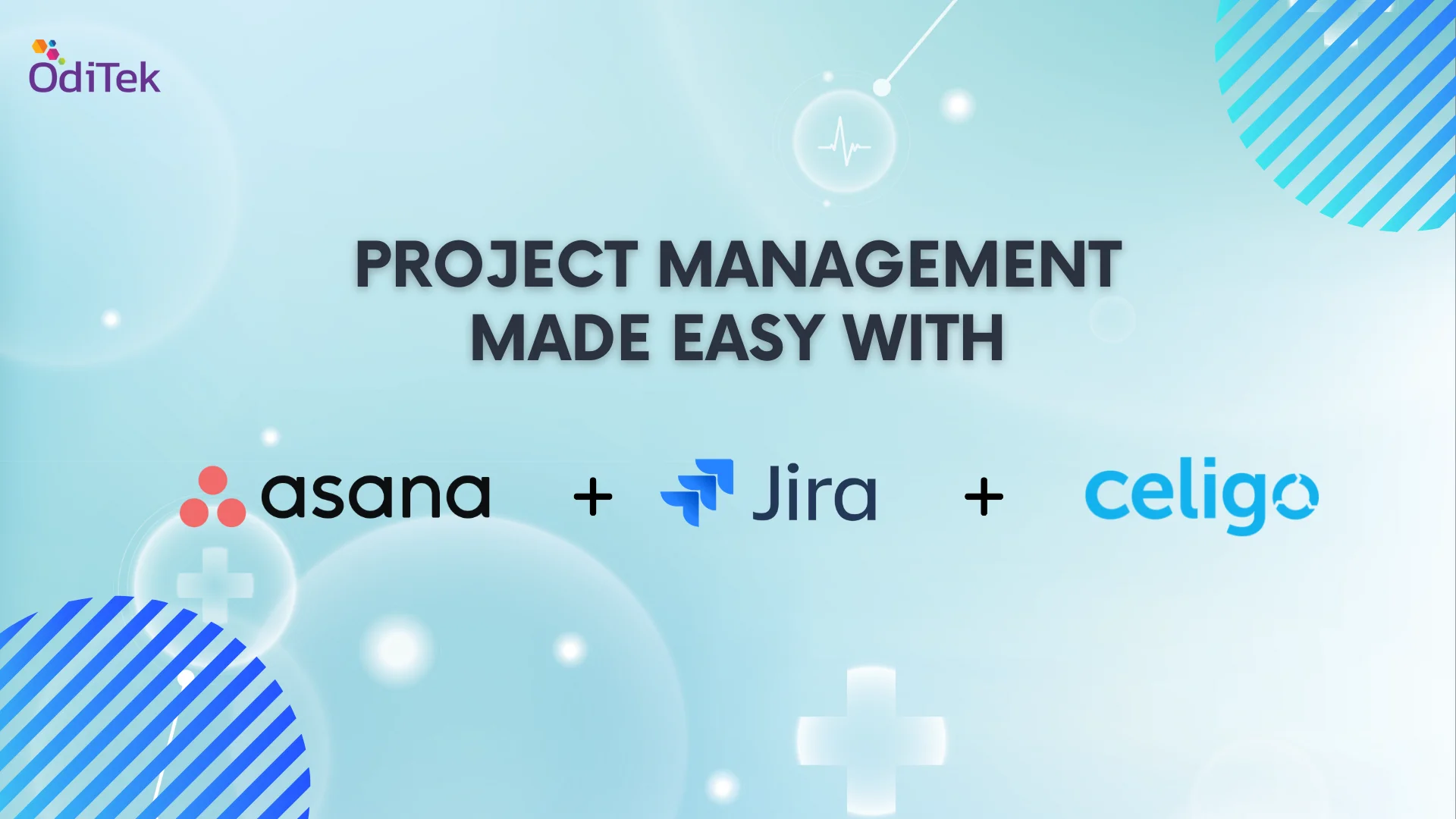In project management, maintaining efficiency and organization is essential for successful outcomes. Many companies rely on project management tools like Asana and Jira to plan, track, and manage their projects. However, when these tools operate independently of each other, they can create isolated pockets of information, often referred to as “silos.” This fragmentation can lead to challenges such as miscommunication between teams, loss of important data, and a decrease in overall productivity.
To overcome these challenges, businesses can utilize integration tools such as Celigo to establish a seamless connection between Asana and Jira. Asana and Jira Integration enables information to flow more freely across different teams and departments, enabling better collaboration and coordination. This integration can also help ensure that tasks and projects are aligned across platforms, reducing the risk of duplicate work or missed deadlines. Additionally, integrated systems provide a more holistic view of a project, making it easier for project managers to track progress and adjust plans as needed. Overall, the Asana and Jira Integration using tools like Celigo can significantly enhance project management efficiency and team collaboration.
Introduction to Asana, Jira, and Celigo
Asana
Asana is a widely used project management tool that offers a comprehensive platform for teams to collaborate and manage their work effectively. One of Asana’s standout features is its user-friendly interface, which makes it easy for users of all experience levels to navigate the platform and access its robust set of features.
With Asana, teams can organize tasks in a variety of ways, such as creating task lists, boards, or timelines. This flexibility allows teams to structure their projects according to their preferred workflow. Users can assign tasks to team members, set deadlines, and establish priorities to ensure that everyone is aware of their responsibilities and the timeline for completion.
Jira
Jira is a versatile project management tool that is particularly well-regarded in the software development and agile project management fields. Its advanced issue tracking and reporting capabilities make it a favorite among software development teams, who rely on its comprehensive features to manage complex projects efficiently.
With Jira, teams can create and manage issues, which can represent tasks, bugs, features, or other work items. Each issue can be customized with fields such as status, priority, assignee, and due date. This granularity allows teams to track the progress of individual tasks and monitor overall project status.
Celigo
Celigo is an integration platform that connects various applications and services. It offers pre-built connectors and customization options that allow businesses to seamlessly integrate different platforms, such as Asana and Jira.
Asana and Jira Integration with Celigo, businesses can create a streamlined project management experience that leverages the strengths of both platforms. Let’s delve into the benefits and practical applications of this integration.
Benefits of Asana and Jira Integration with Celigo
1. Improved Collaboration
• Jira and asana integration with Celigo improves collaboration by bridging the gap between different teams and departments. For instance, a development team using Jira can easily collaborate with a marketing or design team using Asana. The integration ensures that everyone is working from the same information, promoting better coordination and alignment across the project.
• This seamless collaboration reduces misunderstandings, as team members can quickly access tasks, issues, and project details from either platform without manual translation or data re-entry. This leads to smoother handoffs and more efficient workflows.
2. Enhanced Visibility
• Asana and Jira Integration provides a comprehensive overview of project progress, tasks, and issues from both Asana and Jira. Project managers and stakeholders can monitor project timelines, milestones, and dependencies more effectively, allowing them to make informed decisions in real time.
• This enhanced visibility helps identify potential roadblocks or bottlenecks early on, enabling proactive intervention to keep the project on track. It also facilitates more accurate reporting and forecasting for stakeholders.
3. Automated Workflows
• Celigo’s integration allows for the automation of workflows between Asana and Jira, eliminating manual processes that can be time-consuming and error-prone. For example, tasks created in Asana can automatically generate corresponding issues in Jira, and vice versa, keeping both systems synchronized.
• This automation can extend to other processes such as updating task statuses, assigning team members, or transferring attachments and comments between platforms. It helps maintain data consistency and ensures that all team members have access to the latest information.
4. Increased Productivity
• By streamlining communication and automating repetitive tasks, integration with Celigo frees up time for team members to focus on high-value work. This leads to increased productivity as they can concentrate on tasks that directly contribute to project goals and outcomes.
• Additionally, integration reduces the risk of information silos and redundant efforts, ensuring that all teams work efficiently and cohesively towards common objectives.
5. Customizable Integration
• Celigo’s integration offers a high degree of customization, allowing businesses to tailor the connection between Asana and Jira to their specific needs and workflows. This adaptability ensures that the integration supports the company’s unique processes, enhancing overall efficiency.
• For example, businesses can customize how data is mapped and transferred between Asana and Jira, set up specific triggers for automation, or define how different project elements correspond across the platforms. This flexibility ensures that the integration aligns with the company’s existing systems and goals, resulting in a more seamless and effective workflow.
Streamlining Project Workflows with Asana and Jira Integration
1. Bidirectional Task Synchronization
Asana and Jira Integration helps organizations synchronize tasks and issues bidirectionally between the two platforms. This ensures that updates made in either Asana or Jira are reflected in real-time, eliminating the need for manual data entry and reducing the risk of discrepancies.
2. Unified Project Visibility
Using asana and jira together, teams gain a unified view of project progress and status across both platforms. Whether it’s tracking tasks in Asana or monitoring issues in Jira, stakeholders can access up-to-date information without switching between multiple tools, fostering transparency and collaboration.
3. Efficient Issue Resolution
Asana and Jira Integration enables seamless issue tracking and resolution workflows. Teams can create Jira issues directly from Asana tasks and vice versa, ensuring that all stakeholders are aligned and issues are addressed promptly. This streamlines the issue resolution process and improves overall project efficiency.
4. Automated Workflows
Celigo Integration Platform allows organizations to automate repetitive tasks and workflows between Asana and Jira. Whether it’s updating task statuses, assigning issues to team members, or sending notifications, automation reduces manual effort, minimizes errors, and accelerates project delivery.
How to Integrate Asana and Jira with Celigo
1. Set Up Celigo
First, set up a Celigo account if you haven’t already. The platform offers various connectors and integration solutions.
2. Choose the Asana-Jira Integration
In the Celigo platform, select the integration that connects Asana and Jira. Follow the setup instructions to configure the integration according to your needs.
3. Map Fields and Attributes
Map the fields and attributes between Asana and Jira to ensure smooth data transfer. This step is crucial for maintaining data consistency and integrity.
4. Customize Workflows
Customize the integration according to your business requirements. Define how tasks and issues should be synchronized and automated.
5. Monitor and Adjust
Once the integration is set up, monitor its performance and make adjustments as needed. Celigo provides monitoring tools to track the integration’s effectiveness and troubleshoot any issues.
Conclusion
Asana and Jira Integration with Celigo offers numerous benefits for businesses looking to streamline their project management processes. By connecting these powerful platforms, teams can collaborate more effectively, improve visibility into project progress, and automate workflows for increased productivity. Celigo’s integration capabilities allow businesses to customize the integration according to their needs, ensuring a seamless and efficient project management experience. As companies continue to adopt these integration strategies, they will be better positioned to succeed in today’s fast-paced business environment.
Partner with us to take full advantage of Asana and Jira integration with Celigo, and experience the benefits of streamlined communication, automated workflows, and a holistic view of your projects.
Contact us today to learn more about how we can assist you in transforming your project management processes.







